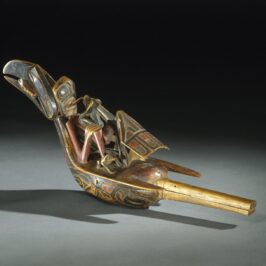The craft of instrument making, often seen as a technical pursuit, is deeply intertwined with spiritual dimensions across various cultures. This article explores how instrument makers, through their meticulous craftsmanship and connection with natural materials, tap into spiritual realms and imbue their creations with sacred energy.
The Sacredness of Natural Materials
Many traditional cultures believe that natural materials possess inherent spiritual qualities. Wood, in particular, is often considered a living organism, imbued with the energy of the trees from which it was harvested. Instrument makers who source their materials sustainably and with reverence for the natural world tap into this spiritual energy.
- Tree Spirits: In some cultures, trees are believed to be inhabited by spirits or deities. Instrument makers may perform rituals or offer prayers before felling a tree, seeking permission and expressing gratitude. The choice of a particular tree may be influenced by its location, age, or the specific qualities associated with its species. For example, a maple tree might be chosen for its strength and resilience, while a willow might be associated with wisdom and flexibility.
- Material Resonance: The choice of wood or other materials can be influenced by spiritual beliefs. Certain woods may be associated with specific deities or qualities, such as strength, wisdom, or healing. The instrument maker may select materials that resonate with their own spiritual intentions or the purpose of the instrument.
The Ritualistic Nature of Creation
The process of instrument making itself can be a spiritual experience. Many instrument makers approach their craft with a sense of reverence and mindfulness.
- Sacred Gestures: The shaping of the instrument, the carving of intricate details, and the application of finishes can be seen as acts of ritual. These gestures may be accompanied by prayers, mantras, or meditation. The instrument maker may envision the desired qualities of the instrument, such as its sound, appearance, or spiritual energy, and channel their intentions into the creation process.
- Breath of Life: The final stage of instrument making, often involving the stringing or tuning of the instrument, can be seen as breathing life into the creation. This act may be accompanied by ceremonies or blessings. The instrument maker may visualize the instrument coming to life, filled with the desired spiritual qualities.
The Instrument as a Spiritual Conduit
Once completed, an instrument is believed to serve as a conduit for spiritual energy. It can be used to connect with the divine, to heal, or to evoke profound emotions.
- Sacred Sounds: The sounds produced by an instrument can be seen as a form of sacred language. They can be used to communicate with spirits, ancestors, or higher powers. The instrument maker may have a deep understanding of the vibrational qualities of different sounds and how they can be used to evoke specific spiritual states.
- Spiritual Healing: In many cultures, music is believed to have healing properties. Instruments can be used in ceremonies and rituals to promote physical and emotional well-being. The instrument maker may be trained in specific healing techniques or have a deep understanding of the therapeutic effects of music.
The Instrument Maker as a Spiritual Practitioner
Instrument makers who approach their craft with a spiritual perspective can be seen as spiritual practitioners in their own right. They are custodians of traditional knowledge and skills, and their work contributes to the preservation of cultural heritage.
- Spiritual Lineage: In many cultures, instrument making is passed down through generations, creating a spiritual lineage. Instrument makers may feel a deep connection to their ancestors and the traditions they uphold. They may have received training from a spiritual teacher or elder who has passed down the knowledge and practices associated with instrument making.
- Community Building: The creation and use of instruments can foster a sense of community and belonging. Instruments can be used to bring people together for celebrations, rituals, and communal music-making. The instrument maker may play a central role in these events, leading ceremonies or providing spiritual guidance.
The spiritual dimensions of instrument making offer a rich and multifaceted perspective on this ancient craft. By understanding the sacredness of natural materials, the ritualistic nature of the creation process, and the spiritual significance of the instrument itself, we can gain a deeper appreciation for the artistry and cultural heritage embodied in these remarkable creations.


